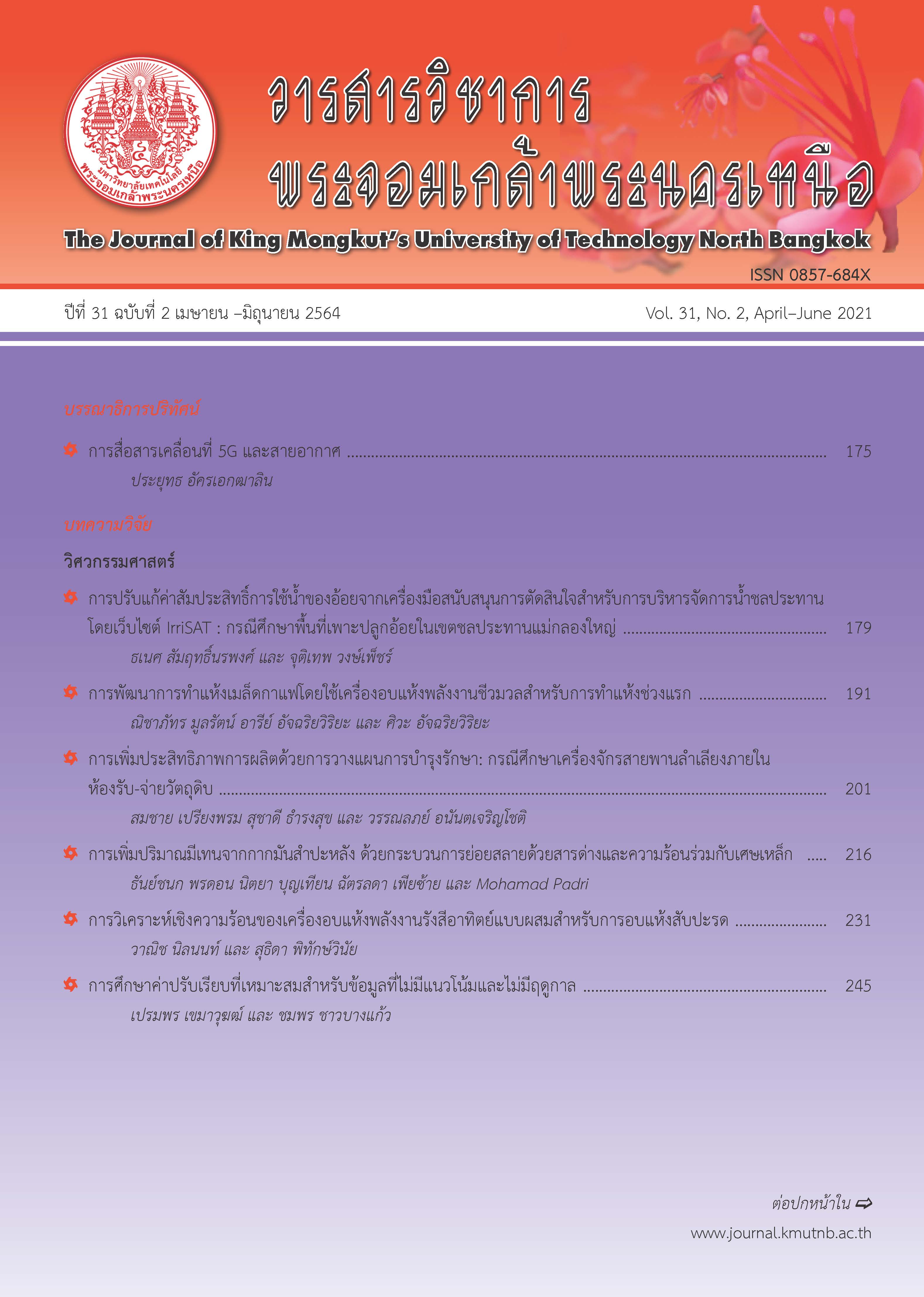การเปรียบเทียบวิธีการประมาณค่าข้อมูลสูญหายในแผนแบบวัดซ้ำภายในหน่วยทดลอง
Main Article Content
บทคัดย่อ
แผนแบบการทดลองแบบวัดซ้ำมีลักษณะการเก็บข้อมูลจากหน่วยตัวอย่างเดียวกัน แต่ต่างกันที่ช่วงเวลาหรือเงื่อนไขอื่นซึ่งนิยมใช้ในงานวิจัยทางด้านการแพทย์หรือสาธารณสุข บทความนี้เสนอการเปรียบเทียบวิธีการประมาณค่าข้อมูลสูญหายในแผนแบบการทดลองแบบวัดซ้ำภายในหน่วยทดลองเมื่อสุ่มค่าข้อมูลสูญหายอย่างสุ่มสมบูรณ์ โดยประยุกต์จากวิธีการแทนที่ด้วยค่าเฉลี่ยวิธี CopyMean Trajectory วิธี CopyMean LOCF และวิธีโครงข่ายประสาทเทียม โดยใช้เกณฑ์ในการประเมินด้วยค่า MAD, RMSD และค่า Bias ซึ่งทำการทดลองทั้งในชุดข้อมูลจริงและชุดข้อมูลจำลองโดยในชุดข้อมูลจำลองกำหนดให้ในแต่ละตัวแปรมีค่าเฉลี่ยและค่าความแปรปรวนเท่ากัน ผลการวิจัยพบว่า ในกรณีส่วนใหญ่วิธีการโครงข่ายประสาทเทียมเป็นวิธีการที่ดีที่สุดในการประมาณค่าข้อมูลสูญหายในข้อมูลจริงและข้อมูลจำลองในกรณีไม่มีสหสัมพันธ์และสหสัมพันธ์น้อย (0, 0.3 และ 0.5) ส่วนในข้อมูลจำลองกรณีที่สหสัมพันธ์ค่อนข้างมาก (0.7 และ 0.9) วิธี CopyMean Trajectory เป็นวิธีการที่ดีที่สุดในกรณีส่วนใหญ่
Article Details
บทความที่ลงตีพิมพ์เป็นข้อคิดเห็นของผู้เขียนเท่านั้น
ผู้เขียนจะต้องเป็นผู้รับผิดชอบต่อผลทางกฎหมายใดๆ ที่อาจเกิดขึ้นจากบทความนั้น
เอกสารอ้างอิง
[2] C. R. Bingham, M. Stemmler, A. C. Peterson, and J. A. Graber, “Imputing missing data values in repeated measurement within-subjects designs,” Methods of Psychological Research Online, vol. 3, no. 2, pp. 131–155, 1998.
[3] C. Genolini, A. Lacombe, R. cochard, and F. Subtil, “CopyMean: A new method to predict monotone missing values in longitudinal studies,” Computer Methods and Programs in Biomedicine, vol. 132, pp. 29–44, 2016.
[4] A. Gupta and M. S. Lam, “Estimating missing values using neural networks,” The Journal of the Operational Research Society, vol. 41, pp. 229–238, 1996.
[5] S. Fritsch, F. Guenther, M. N. Wright, M. Suling, and S. M. Mueller. (2019, February). Package ‘neuralnet’, GitHub, Inc., [Online]. Available: https://cran.r-project.org/web/packages/neural net/neuralnet.pdf
[6] K. I. Singley, B. D. Hale, and D. Russell, “Heart rate, anxiety, and hardiness in novice (Tandem) and experienced (Solo) skydivers,” Journal of Sport Behavior, vol. 35, no. 4, pp. 453–469, 2012.

